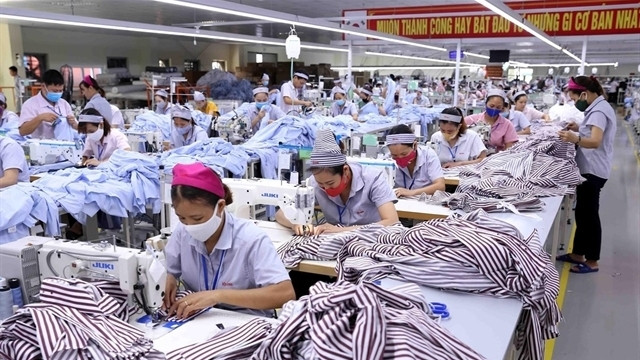The country was up five places against last year’s ranking to reach 19th on the list, according to UN Conference on Trade and Development (UNCTAD)’s World Investment Report 2021.
While global FDI flows fell by 35% to US$ 1 trillion amid the COVID-19 pandemic, the lowest level since 2005 and almost 20 percent lower than the 2009 trough after the global financial crisis, the FDI in Southeast Asia, considered an engine of global FDI growth for the past decade, contracted by 25% to US$ 136 billion, said the report.
It stated that Vietnam remained among the three largest recipients in the region with a decline of only 2%, while the remaining two of Singapore and Indonesia suffered drops of up to 21% and 22%, respectively.
According to UNCTAD, a slight decline in FDI to the country was due to significantly lower investment contractions in manufacturing and realty activities.
However, thanks to the rise in investment in electricity projects, including a US$ 5 billion gas-fired power plant proposed by ExxonMobil (US) and a US$ 2.2 billion coal-fired power plant developed by Thai MNEs in the Quang Tri Economic Zone, the flow of FDI was still okay.
As investors, Singapore and Japan topped the list of countries and territories having investment projects, in which Singapore’s reached US$ 5.64 billion, 37% of the total and Japan invested US$ 2.44 billion, a surge of 67% in investment compared to 2019.
UNCTAD pointed out local measures to promote investment, including the permission for certain disputes between foreign investors and the State to be taken to international arbitration, were keys to attract FDI inflows.
The report also said the Vietnamese government has expanded the list of business lines eligible for investment incentives, along with the publishing of a detailed list of conditions applied for businesses to be considered high-tech enterprises eligible for tax incentives as good points.
“Vietnam for the first time introduced a negative list on market access, affording foreign investors with national treatment (NT) except in the sectors included in that list. The country also raised the cap on foreign ownership in domestic airlines.”
According to the report released late June, the US continued to be the world’s largest FDI recipient, followed by China and Hong Kong (China).
UNCTAD expected global FDI flows to bottom out in 2021 and later recover some lost ground, with an increase of about 10-15%.
The report said: “This would still leave FDI some 25% below the 2019 level,” adding current forecasts show a further increase in 2022 when the upper bound of projections would bring FDI back to the 2019 level.
The report concluded: “Prospects are highly uncertain and will depend on, among other factors, the pace of economic recovery and the possibility of pandemic relapses, the potential impact on FDI of recovery spending packages, and policy pressures.”
In the first six months of 2021, the total FDI commitments to Vietnam declined by 2.6% year-on-year to US$ 15.27 billion, the FDI disbursement rate, however, rose by 6.8% to stay at US$ 9.24 billion.
Currently, Vietnam has totally 33,787 foreign investment projects with a combined registered capital of US$ 397.89 billion, while the disbursed amount stood at US$241.1 billion, 60.6% of the committed amount.
















